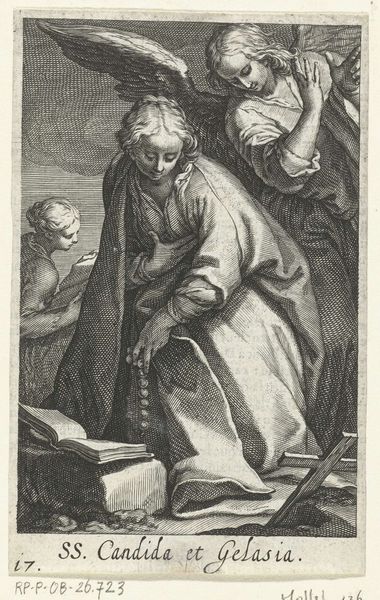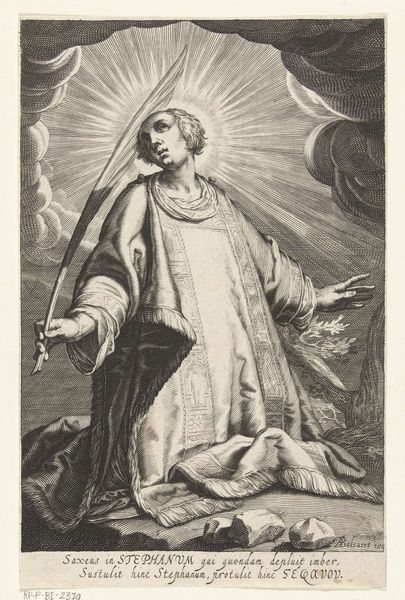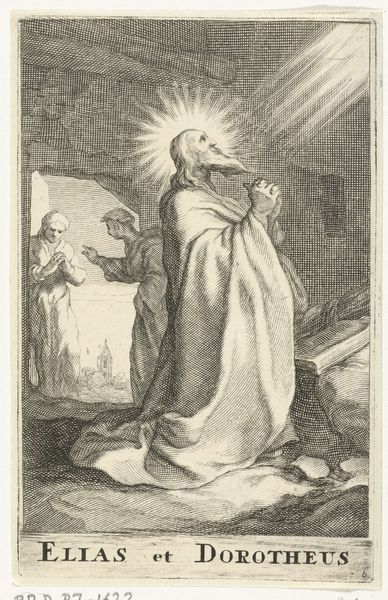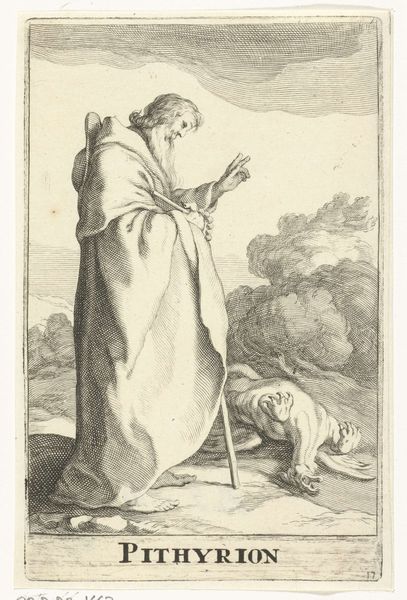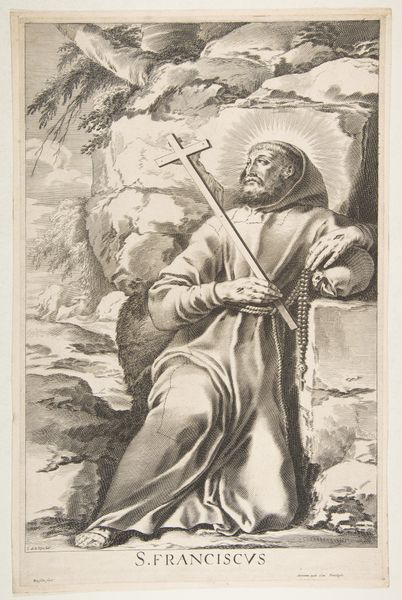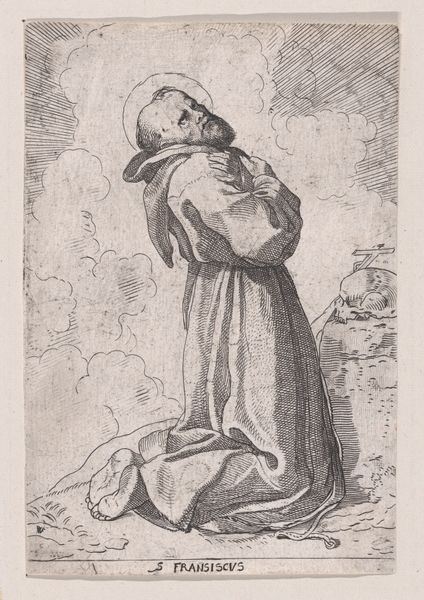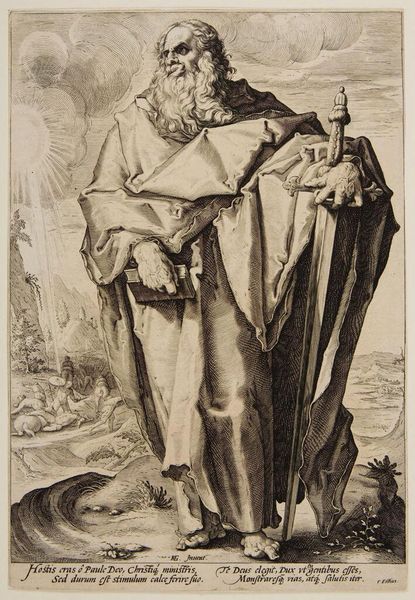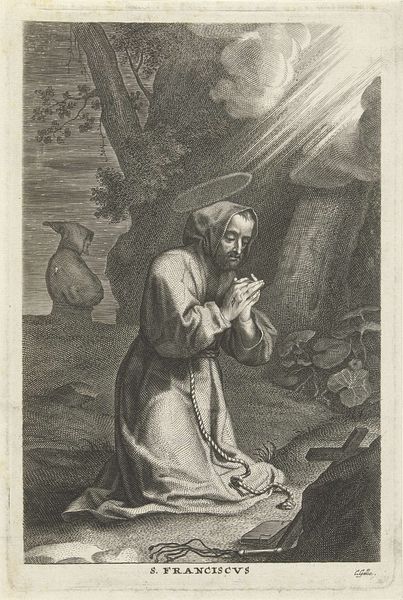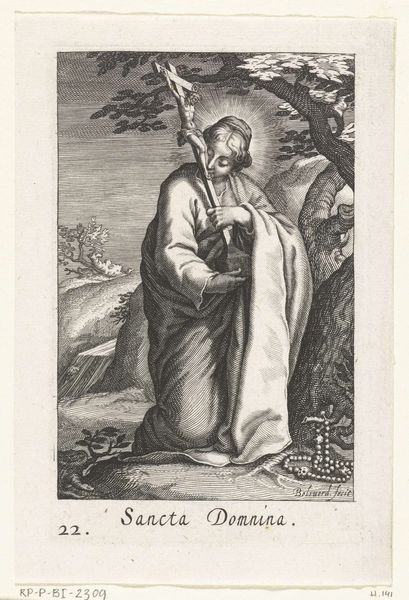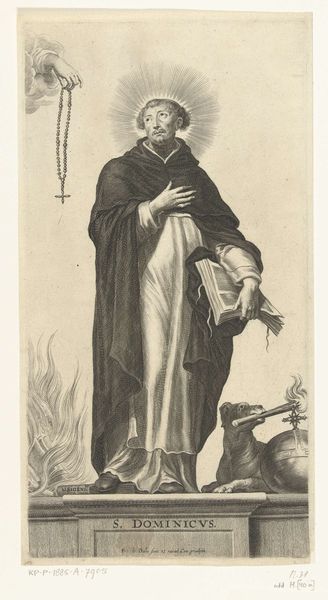
print, engraving
#
portrait
#
baroque
# print
#
old engraving style
#
portrait drawing
#
history-painting
#
engraving
Dimensions: height 166 mm, width 114 mm
Copyright: Rijks Museum: Open Domain
Curator: Looking at this print, I’m immediately struck by its devotional intensity. It's quite theatrical, really. Editor: Indeed. What we're viewing is "Saint Francis Receiving the Stigmata," a baroque engraving by Cornelis Bloemaert, likely created sometime between 1633 and 1692. The Rijksmuseum holds this impression. The technical mastery in rendering textures is truly commendable. Curator: Absolutely. Note the saint's coarse robe contrasting with the ethereal quality of the angel. Considering the context of the Counter-Reformation, wouldn't you say this work aims to visually reinforce the power of divine intervention and the legitimacy of religious experience, positioning Francis as a divinely chosen vessel of sacred suffering? Editor: Undoubtedly. The deliberate rendering of materials serves to elevate the act of labor involved in engraving into an act of devotion. Notice how Bloemaert utilizes varying line weights to mimic chiaroscuro, making the cheap mass-produced print almost sculptural in effect. He’s playing with our perceptions of value, isn’t he? Curator: I concur. And to add another layer, think about the implications of accessibility. Prints like this allowed for the dissemination of religious imagery across various social strata. It facilitated a personal connection to the divine, albeit one mediated through the visual language sanctioned by the church and its complex relationship with power. Editor: Quite right. One mustn't forget the role these images played in shaping and reflecting the worldview of the artist and the intended consumer. From my perspective, that humble book depicted speaks volumes, hinting towards not only spiritual revelation, but artisanal making, manual skills, commerce and its deep cultural resonance. Curator: That’s insightful. So, considering these different points of entry, are we looking at an exercise in religious reinforcement? A subversive engagement with devotional imagery? A statement about labor in image making? Editor: I believe it encompasses all. Approaching it through the means of production exposes how social messaging has the potential to become art. I would not go so far to suggest one is inherently divorced from the other, as both serve different audiences or end purposes. Curator: A wonderful summation. Considering how much cultural knowledge is embedded within an engraving—religious, material, and more—really forces us to question its complex resonance in its time and still today.
Comments
No comments
Be the first to comment and join the conversation on the ultimate creative platform.
